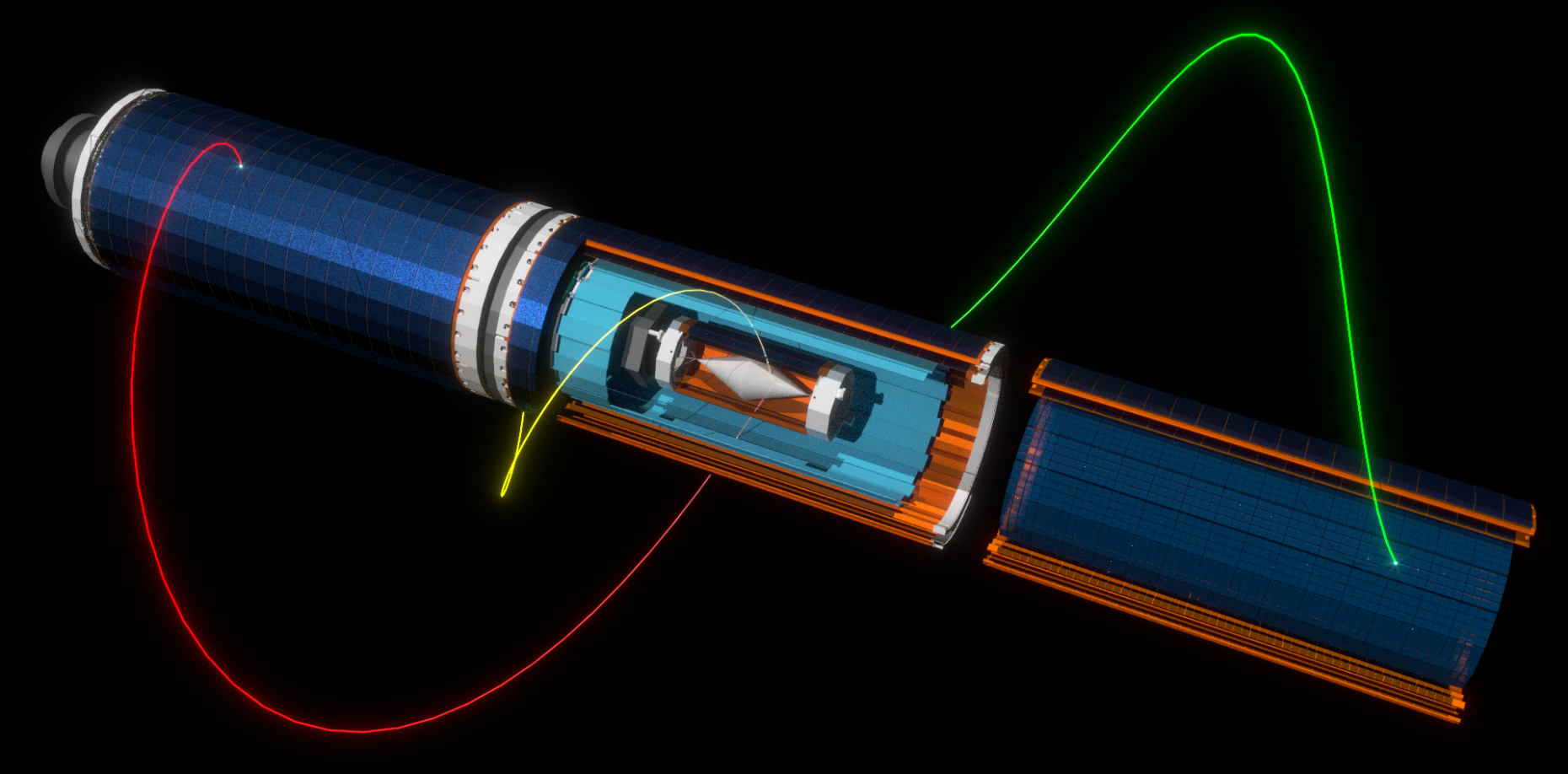Mu3e: Charged Lepton Flavor Violation
Description
Within the standard model of particle physics, the decay of muons into three electrons "mu --> eee" is only allowed at an extremely low and unmeasurable rate, because it violates the lepton flavour number symmetry.
Any observation of such a process would therefore without any doubt point to the existence of physics beyond the standard model of particle physics. This high-sensitivity experiment is complementary to existing other search experiments and to the experiments at the LHC. This experiment aims to reach a sensitivity of one in 10^16 muon decays, which is a four order of magnitude improvement over the previous results.
With the technical design completed in late 2019, the experiment is in the production readiness and pre-production stage. We plan to construct the phase 1 detector in 2020/2021 together with our collaborators from Paul Scherrer Institute, University of Geneva, University of Zurich, University of Heidelberg, University of Mainz, Karlsruhe Institute of Technology, University of Liverpool, University of Oxford, University of Bristol and University College London.
The technologies chosen include silicon detectors with High Voltage Active Pixel Sensors (HV-MAPS) to measure precisely the momenta of charged particles, and a scintillating fibre detector to determine the time-of-flight with high-resolution, aiming at a few hundred picosecond time resolution. This fibre detector will be of cylindrical geometry of about 6 cm radius and about 30 cm length. All detector components are inside a superconducting solenoid magnet with ~1 T field.
IPA participates in the development and in the construction of all aspects of this scintillating fibre detector. This includes development of fibre geometry, photon detection, very fast signal processing, and data readout at very high rates in the order of a MHz per channel. First prototypes of the detector components have been constructed, characterized and demonstrated to work successfully as designed. The FPGA-based data acquisition system is being finalized, and the actual scintillating fibre detector to be inserted in the magnet will be constructed in 2020. This scintillating fibre detector project is a combined Swiss effort of ETHZ, PSI and UniGe.

